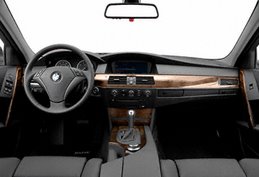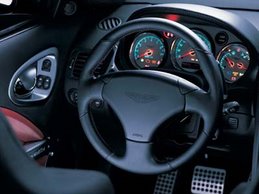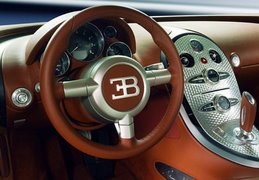 2006 Hyundai Sonata LX
2006 Hyundai Sonata LX - During that spell, the silver Sonata LX V-6 averaged 23 mpg (versus EPA ratings of 20 mpg city and 30 mpg highway) and even after 40,000 miles was capable of galloping to 60 mph in 6.7 seconds, making it as quick as the last Honda Civic Si we tested. Frank wasn’t as flashy as most of his other long-term stablemates and thus made fewer major treks, although he did wind up in Patrick Bedard’s Arizona garage for a few months, made three trips to Wisconsin, and was twice in Florida, including spring break in Daytona. After that, the cockpit smelled as if it had pulled an all-nighter with the Rat Pack—we were afraid to ask for details—and a thorough disinfecting was ordered.
We ordered our LX V-6 with exactly zero options, because its standard equipment included stability control, a five-speed automatic with manumatic, a CD/MP3 player, cruise control, fog lights, electric seat adjustments for the driver, heated front seats, 17-inch alloys, a tilting-and-telescoping wheel, and a five-year/60,000-mile warranty buttressed by a 10-year/100,000-mile powertrain warranty.

After 40,000 miles, everything still operated as advertised, zero repairs required. The turn-signal and wiper stalks still moved with silky ease. The leather looked fine—even the leather on the steering wheel hadn’t become shiny. And the vinyl and plastic trim pieces, previously a Hyundai weakness, showed few scars or scuffs.
Otherwise, our complaints included a driver’s-side wiper that was tapping the top of the A-pillar. Everyone bitched about an overly sensitive sensor in the passenger seat that triggered a seatbelt warning light even if something as insubstantial as a briefcase was resting on the cushion. There were several gripes that the transmission was slow to shift. The steering was a tad too quick just off-center. And the AM-radio reception was mysteriously subpar.
Over and over, editors said of our Seoul train, “It reminds me of the previous-generation Accord.” Like the Accord, this most-recent Sonata succeeds because it is quiet, dignified, practical, comfortable, and reliable. That it goes unnoticed on America’s highways is perhaps its most obvious peccadillo, but there are plenty of over-40-somethings who take great satisfaction in going unnoticed.

As is true with all Hyundais, the Sonata still carries some of that old built-in-Korea baggage, even though it is assembled in Alabama. Automotive Lease Guide projects that Honda’s vehicles, after 36 months, will hold 53.7 percent of their original value, whereas Hyundai’s will hold only 42.6 percent. If we apply those projections to the Sonata versus an Accord, you’ll experience $2500 more depreciation over three years with the Hyundai. It also proves that stigmas, like Samsonite, are hard to break.
You know that “H” on the grille of every Accord? The Honda guys must hate seeing a flying “H” on the grille of every Sonata.
 2009 Honda Pilot vs. Ford Flex, Chevy Traverse, Hyundai Veracruz, Mazda CX-9, Toyota Highlander - Beat of a different Drummond: We compare six family haulers and, amazingly, drown none of them.
2009 Honda Pilot vs. Ford Flex, Chevy Traverse, Hyundai Veracruz, Mazda CX-9, Toyota Highlander - Beat of a different Drummond: We compare six family haulers and, amazingly, drown none of them.










 As is true with all Hyundais, the Sonata still carries some of that old built-in-Korea baggage, even though it is assembled in Alabama. Automotive Lease Guide projects that Honda’s vehicles, after 36 months, will hold 53.7 percent of their original value, whereas Hyundai’s will hold only 42.6 percent. If we apply those projections to the Sonata versus an Accord, you’ll experience $2500 more depreciation over three years with the Hyundai. It also proves that stigmas, like Samsonite, are hard to break.
As is true with all Hyundais, the Sonata still carries some of that old built-in-Korea baggage, even though it is assembled in Alabama. Automotive Lease Guide projects that Honda’s vehicles, after 36 months, will hold 53.7 percent of their original value, whereas Hyundai’s will hold only 42.6 percent. If we apply those projections to the Sonata versus an Accord, you’ll experience $2500 more depreciation over three years with the Hyundai. It also proves that stigmas, like Samsonite, are hard to break.







